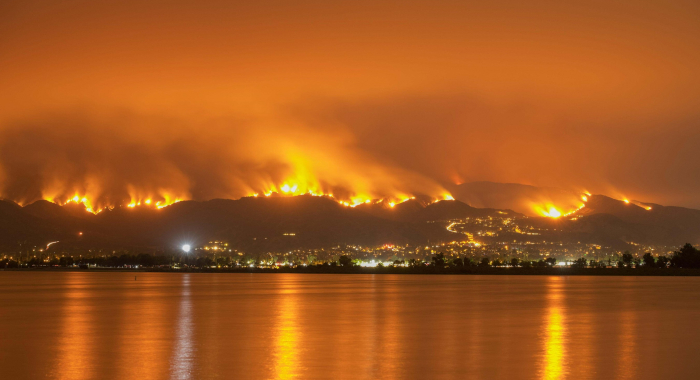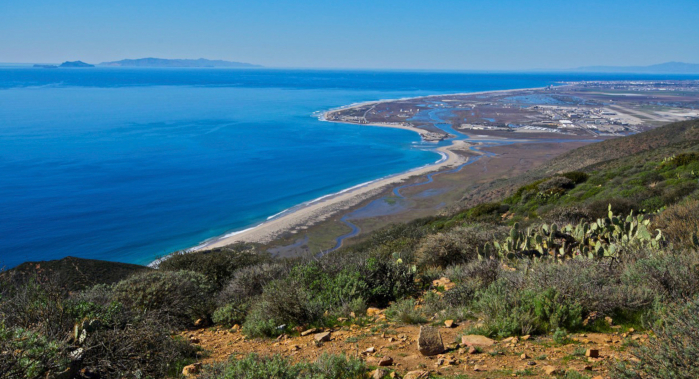Systematic, science-based conservation planning is a hallmark of the Conservancy. For biodiversity to thrive, habitats need to be protected, enhanced, or restored not just in the still wild places on the planet but also where people live and make their livelihoods.
Multi-disciplinary planning can help elucidate where the highest priority places are and what needs to happen there – and inform tradeoffs between conservation and other societal values.


Jeanette K. Howard, Kurt A. Fesenmyer, Theodore E. Grantham, Joshua H. Viers, Peter R. Ode, Peter B. Moyle, Sarah J. Kupferburg, Joseph L. Furnish, Andrew Rehn, Joseph Slusark, Raphael D. Mazor, Nicholas R. Santos, Ryan A. Peek, Amber N. Wright
Freshwater ecosystems are in peril globally. Threats to freshwater biodiversity are numerous and include habitat degradation, pollution, overexploitation, dam construction, species invasion, and…Sophie S. Parker, Jim Moore, Leonard Warren
The 185 mile-long Amargosa River, one of only two rivers with perennial flow in the California portion of the Mojave Desert, is fed by an ancient groundwater aquifer. The river provides habitat for…The Conservancy’s Omniscape tool provides a connectivity roadmap for plants and animals that need to adapt as the climate warms.
Alexander C.A.D., F. Poulsen, D.C.E. Robinson, B.O. Ma , R.A. Luster
Management of the Sacramento River and Sacramento–San Joaquin Delta is one of California’s greatest challenges, requiring trade-offs between valued components that serve a multiplicity of…Seth P. D. Riley, Trish Smith, T. Winston Vickers
Freeways are barriers to wildlife passage and gene exchange. In Southern California, mountain lion movement has been severely restricted due to this infrastructure. As a result, the mountain…Aburto-Oropeza, O., M. Edwards, S. Butterfield, and 93 additional authors
The U.S. and Mexico face many shared ecological changes due to the increased frequency and severity of droughts and rising energy demands; trends that entail economic costs for both nations and…Parker, S.S., B.V. Brown, B.S. Cohen, N.S. Fraga, J.J. Knapp, Z. Principe, J. Moore, G.B. Pauly, J.M. Randall, T.A. Wake
A bioblitz is a collaborative, rapid field assessment that takes place in a given location over a short period of time. This paper discusses how bioblitz events involving experts are being used to…H. Scott Butterfield, Rodd Kelsey, Abigail Hart, Tanushree Biswas, Mark Kramer, Dick Cameron, Laura Crane, Erica Brand
California's Sustainable Groundwater Management Act (SGMA) established a framework for sustainable, local groundwater management. SGMA requires groundwater-dependent regions to…Energy+Environmental Economics for The Nature Conservancy, Arne Olson, Doug Allen, Vivian Li, Emily Leslie
California leads the nation in the transition to a clean energy economy. However, current transmission planning processes limit development of new renewable resources. This report (slide deck),…Rodd Kelsey, Edward Smith, Tanushree Biswas, Chris McColl, Kristen Wilson, Dick Cameron
This report provides a systematic regional-scale assessment of biodiversity, fire regime change, and fire risk to infrastructure of forested watersheds across the Sierra Nevada and prioritizes…Emma C. Underwood, Rachel A. Hutchinson, Joshua H. Viers, T. Rodd Kelsey, Trisha Distler, Jaymee Marty
This paper discusses and provides modeled estimates of the biodiversity and ecosystem service outcomes of three different future land use scenarios, compared to current land uses, in a cultivated…Carrie Schloss, Elizabeth O'Donoghue, Christa Cassidy, Tom Robinson, Serena Unger, Adam Garcia, Dan Rademacher
The Bay Area Greenprint tool provides land use and infrastructure agencies, consultants, and advocates easily accessible, interpretable, and scientifically robust information on habitat and ecosystem…D.R. Cameron, L. Crane, S.S. Parker, J.M. Randall
This book chapter discusses how California's greenhouse gas emission reduction goals spurred solar development in the Mojave Desert—development that could have negative impacts if poorly…Melissa M. Rohde, Ray Froend, Jeanette Howard
Groundwater is a vital water supply worldwide for people and nature. However, species and ecosystems that depend on groundwater for some or all of their water needs, known as groundwater dependent…Kristen E. Dybala, Neil Clipperton, Thomas Gardali, Gregory H. Golet, Rodd Kelsey, Stefan Lorenzato, Ron Melcer, Jr., Nathaniel E. Seavy, Joseph G. Silveira
The Conservancy and partners are working to establish riparian ecosystems that provide sufficient habitat to support genetically robust, self-sustaining, and resilient bird populations in…Kristen E. Dybala, Neil Clipperton, Thomas Gardali, Gregory H. Golet, Rodd Kelsey, Stefan Lorenzato, Ronald Melcer, Jr., Nathaniel Seavy, Joseph G. Silveira, Gregory S. Yarris
Quantitative population objectives are necessary to achieve conservation goals of secure or robust wildlife populations, however, existing methods for setting them often require extensive…Kristen Wilson, Erik Lowe, Stacey Wolny, Barry Nickel , Rodd Kelsey
This study demonstrates how science-based planning with stakeholder input can improve and direct conservation investments across existing state and jurisdictional boundaries. The authors set out to…